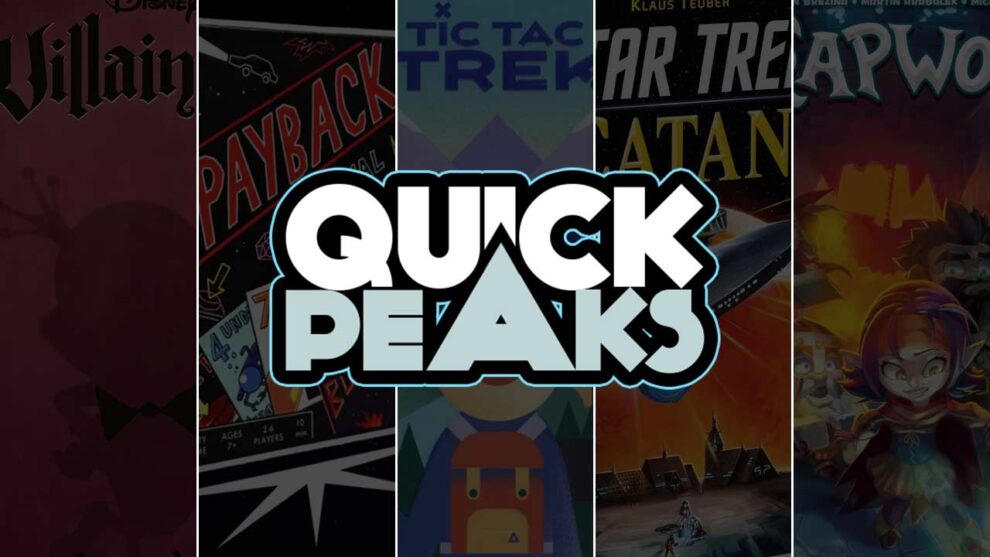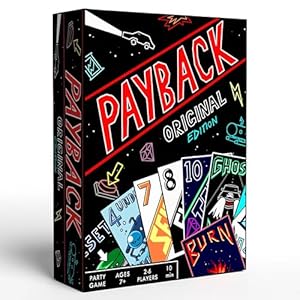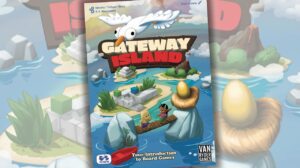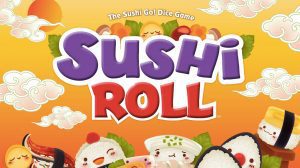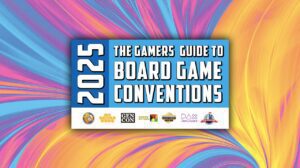Disney Villainous: Sugar and Spite – Justin Bell
Another day, another Villainous! Did you know that there is so much Villainous in the world now that there are three separate Villainous lines—Marvel, Star Wars, and Disney? (This is a little strange to me, if only because I thought Disney owned the rights to all those properties.) Needless to say, the Villainous system is pretty popular, and I recently had the chance to run through a review copy of the latest Disney content, Villainous: Sugar and Spite. This time around we get two new villains from the Mouse House: Shere Khan (The Jungle Book) and King Candy (Wreck-It Ralph).
The novel addition here is King Candy, who has a cool movement mechanic that spices up how this character sits between spaces as well as a race component that determines if he meets his win condition. One play into the new experience, the verdict was in: the new additions feel wholly different (although Shere Khan just isn’t as interesting as King Candy), Villainous still overstays its welcome by 20-30 minutes every time I play, and the production is gorgeous, especially the movers supplied for the two new characters.
We still own the Disney Villainous: Introduction to Evil set, and that’s all my kids need…even for this first play with new goodies, my kids were fighting over who could play Captain Hook (from Introduction to Evil) and not who could play King Candy or Shere Khan. Some of that is the movie reference—Wreck-It Ralph didn’t resonate as much in my household, and I can’t trick the kids into going as far back as the original Jungle Book. But Disney Villainous: Sugar and Spite does all it needs to do—offer fans more chances to play around with the characters of their youth, in a system that is seemingly endless with future villain possibilities.
Ease of entry?:
★★★★☆ – The odd bump or two
Would I play it again?:
★★★☆☆ – Wouldn’t suggest it, but would happily play it
Read more articles from Justin Bell.
Payback Card Game – Andy Matthews
Motivations are an interesting thing. Some people play board games to spend time with friends and family, or to challenge themselves mentally, and still other people play games with one goal in mind–to win, and they’re willing to be ruthless to do so. That’s not my jam, I’m definitely more in the “spend time with friends” camp. So when the designer of Payback Card Game reached out to me—the game’s tagline being “Demolish Friendships One Card at a Time”—I almost immediately dismissed it. But after reading through the material and watching a demo video I begrudgingly agreed to accept a copy.
My frens, this is why you shouldn’t judge a book by its cover. Thinking that Payback Card Game (henceforth just Payback) was more like Munchkin than UNO almost caused me to miss out on a good time. Payback is a card shedding game, like the aforementioned UNO, in which players attempt to play all the cards from their hand, and from the 6 cards on the table in front of them, before any of the other players. You simply have to play a number card higher than the previous card, or one of the myriad special cards. If you can’t, then you have to take the entire discard pile into your hand. After playing you draw back up to 3 cards (unless you’ve got more in your hand). After the draw pile, and your hand, is empty you can start playing from the cards in front of you.
Payback has some warts: oftentimes you’re picking up a discard pile with 10 or more cards in it, which puts you at a significant disadvantage compared to players who only have 3 cards in their hand. The cards are oddly oversized, which makes shuffling a bit challenging for folks with smaller hands, and there’s definitely a stabbiness factor to the game; but then again so does UNO. But Payback also has some pretty nifty features. The artwork is a glorious homage to Microsoft Paint, with pixely graphics that embrace the DIY ethos. It has a heavy duty box with a magnetic clasp, impressive for a self-published game. But most importantly it was fun. I played with my wife and son and we cheered at every victory, and hooted and laughed when one of us had to pick up the discard pile.
As you read this Payback is available to back on Kickstarter, and if you enjoy light card games with more than a touch of stabbiness, then you should probably back this one.
Ease of entry?
★★★★☆ – The odd bump or two
Would I play it again?
★★★★☆ – Would like to play it again
Read more articles from Andy Matthews.
Tic Tac Trek – Andrew Lynch
Alley Cat’s series of Tinderblox releases have established a clear and recognizable raison d’être. They’re here to give you a quick, enjoyable, portable experience, in an aesthetically appealing and materially robust format. These are games about camping and grilling and hiking that you could play while on a camping trip, at a barbecue, or during a quick break on the trail.
Tic Tac Trek is, aesthetically speaking, probably this product family’s apex. I love the color palette, the textures, the wooden fires, it’s all very good. The gameplay is clean, a somewhat more sophisticated spin on tic-tac-toe. There are moments of joy, of strategic acuity, though the point of this, as with most of the Tinderblox family, is pleasance. You get started, you have your bearings, and you chart your course.
Ease of entry?
★★★★★ – No sweat
Would I play it again?
★★★☆☆ – Wouldn’t suggest it, but would happily play it
Read more articles from Andrew Lynch.
Star Trek: Catan – K. David Ladage
Catan is one of those games I used to gravitate to, but no longer do. One of my friends (Steve) loathes the game. Far too many times played that game in a group where nobody would trade with him. Note I said “with him.” They were all more than willing to trade with each other, but not him (since he is the gamer geek, and is obviously going to win). When you play a game as interactive as Catan and nobody will interact with you in a positive way, that game is going to be a slog. I wrote a set of rules to mitigate this, but that is not the point of this article.
Recently, I attended Congress of Gamers (Spring 2025 session) and met a nice couple who asked if I would like to play a game of Star Trek: Catan. This was a variant I had not tried, and given my game group, it was the first opportunity to play a game in the Catan family in some time. Star Trek: Catan is what you would expect: reskinned resources, planets instead of terrain, starships (supply routes) instead of roads, a Klingon ship and asteroid field instead of a robber and a desert, bases and space stations instead of settlements and cities. The game comes with character cards (e.g., Kirk, Sulu, Ohura, Chapel) which allow you two uses of a special ability before you need to trade them for someone else, reminiscent of a couple of expansions to the original. These cards added some needed help at times when resources were hard to come by. The game is a straight forward, 1:1 reskin of Catan… nothing else (save the characters).
If you like the Catan family of games and you like Star Trek, go for it. Otherwise, I would say pass.
Ease of entry?
★★★★★ – No sweat
Would I play it again?
★★★☆☆ – Wouldn’t suggest it, but would happily play it
Read more articles from K. David Ladage.
Trapwords – David McMillan
Trapwords (2018, Czech Games Edition) is a team-versus-team word game that has players listening to a clue giver and trying to guess the word they’re attempting to describe. There’s a progress track the teams are attempting to reach the end of first, and correctly guessed clues cause progress up this track.
But, it’s not as easy as just getting your team members to guess the clue.
The opposing team has written down a list of words (the titular trapwords) that the clue giver is not allowed to say lest they trigger the trap and cause their team to lose for the current round. The trick is, the clue giver has no idea what those words are, and that’s where things get interesting. As a clue giver, do you assume the other team has written down obvious words and try to avoid those words, or do you assume they will have assumed you’d think that, so they wrote down less obvious words instead? If it’s the latter, then you’re probably safe giving out very obvious clues. But then again, maybe you aren’t. On and on it goes, constantly second guessing yourself. This guessing and second guessing has to be done quickly, too, as you only have 45 seconds to get your team members to guess the clue. And, as if that weren’t already challenging enough, they only get a total of 5 guesses.
I really enjoyed playing this game. I liked the cat-and-mouse nature of it, trying to outwit your opponents while not getting outwitted yourself. That kind of thing speaks to me, and you better bet I’ll be returning for more.
Ease of entry?
★★★★★ – No sweat
Would I play it again?
★★★★★ – Will definitely play it again
Read more articles from David McMillan.


